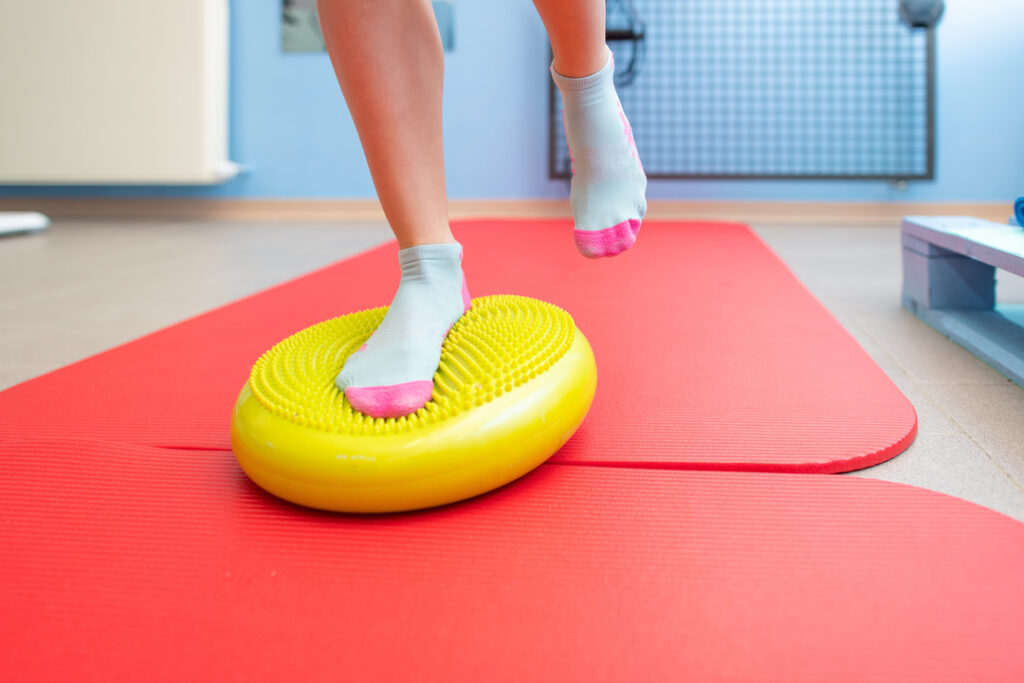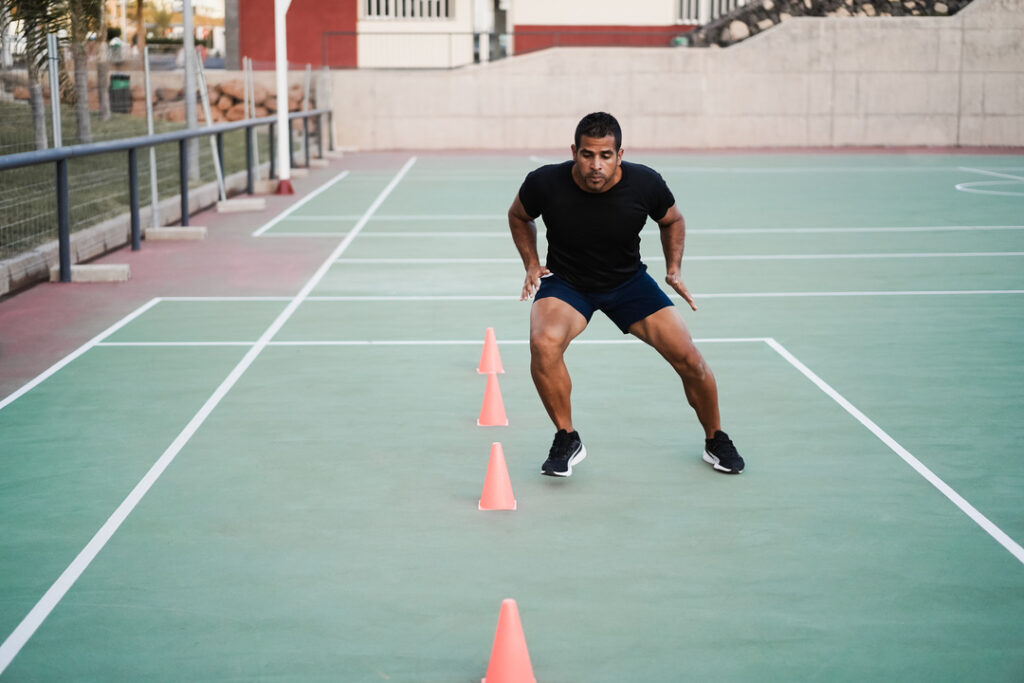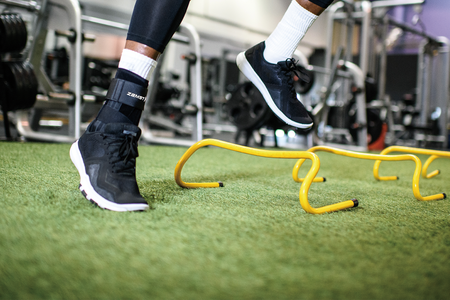Top 5 exercise tips for preventing ankle sprains
Ankle sprains are among the most common injuries, often resulting from sudden twists, turns, or missteps during physical activities. In fact, in the NBA the most common orthopedic injury is a lateral ankle sprain (13.2%).1 Whether you’re an athlete, a fitness enthusiast, or simply someone who enjoys staying active, preventing ankle sprains is crucial for maintaining your mobility and overall well-being. Ankle braces offer ankle support in a way that can reduce risk/and or severity of an ankle sprain. However, in this blog, we’ll delve into the top five exercise tips that can help you strengthen your ankles, improve stability, and minimize the risk of experiencing this painful injury.
- Strengthen your ankle!
Preventing ankle sprains is not a guarantee but we know that strengthening the muscles around the ankle joint will provide you the best chance. Strengthening your ankle enhances stability and also provides better support to the ligaments. Here are 5 simple exercises you can do to start creating the strength you need.
- Banded ankle dorsiflexion and plantarflexion: Place a band around the foot and push down against the resistance and then repeat with the band facing the other direction while lifting your foot up against the resistance
- Calf raises: Stand with your feet hip-width apart and slowly rise onto your toes. Hold for a moment at the top, then gently lower your heels back down
- Eccentric calf raise single leg: Start on a step with your heels off then rise onto your toes then lift one foot off the step and slowly go down with your heel passing the step. It should be one second up and 3 seconds down for the eccentric phase.
- Calf raise with ball between heels: Start with your feet close to together with a small ball wedge between your heels. Then rise onto your toes while squeezing the ball and then gently lower your heels back down. This will strengthen your posterior tibialis muscle.
- Single leg RDL: Start with one foot on the ground with your knee slightly bent then hinge from the hips and reach with opposite hand to the ground then come back up to starting point.
2. Balance and Proprioception Training
An often-underestimated aspect of preventing ankle sprains is balance and proprioception training. Proprioception refers to your body’s ability to sense its position and movement in space. Enhancing this sense can greatly improve your overall stability, making you less prone to accidental ankle injuries. A simple yet effective exercise is the single-leg balance. Stand on one leg while keeping your core engaged and your hips level. Hold this position for 30-60 seconds, then switch to the other leg. To further challenge yourself, consider performing this exercise with your eyes closed or on an unstable surface. Tools like wobble boards or foam pads can also be integrated to intensify your proprioception training.
3. Agility and Coordination Drills
Ankle sprains often occur when sudden changes in direction or uneven surfaces catch us off guard. Agility and coordination drills can enhance your ability to respond quickly to such situations, minimizing the risk of accidents. Lateral hops are an excellent drill to incorporate. Set up markers on the ground and hop laterally over them from side to side. This exercise simulates the lateral movements commonly seen in sports like basketball, soccer, and tennis.
Additionally, cone drills can enhance your agility and coordination. Arrange cones in various patterns and practice weaving in and out of them using controlled, quick movements. These drills not only strengthen your ankle muscles but also improve your overall body awareness. Latter drills are also another way to work on speed and agility improving your ability to move around the court.
4. Stability training
One aspect of training to reduce risk of ankle sprains that is often left out is stability training. Stability training should include foot intrinsic exercises to improve strength of the foot to absorb contact from the ground. This is often best trained without shoes or minimalist shoes. Creating a functional arch for the foot is paramount to decreasing forces at the ankle joint. One of the most important components to stability are the core and hips. The core and is what integrate the upper and lower body together. Without creating a strong foundation with the core, ankle sprains will continue to happen.
5. Proper Warm-up and Stretching Routine
Before delving into any exercise routine, it’s crucial to prepare your body properly. A dynamic warm-up is essential to increase blood flow to your muscles and gradually mobilize your ankle joints. Dynamic warm-ups can include leg swings, ankle rotations, and light jogging/biking to ensure your ankles are ready for the upcoming workout. Banded hip strengthening exercises is a great way to activate your glute muscles to prepare your body for your activity.
After your activity is finished its important to focus on a form of mobility such as foam rolling, static and dynamic stretching. Adequate flexibility in these areas can prevent muscle imbalances and reduce the risk of straining the ankle ligaments.
Summary
Preventing ankle sprains is a hard task for running and jumping sports but one thing we know is actively working to strengthen your ankles will improve your stability. Incorporating ankle strengthening exercises, balance and proprioception training, agility drills, stability training, and proper warm-up and stretching routines can significantly reduce your risk of experiencing this common injury.
Bracing can also be an option. Whether you are already injured or not injured, it is always a good option to protect your ankles from injuries. Zamst offers various lineup of ankle braces to meet your needs.
Remember, consistency is key, and gradual progression is crucial to avoid overexertion. If you have a history of ankle injuries or specific concerns, consulting a healthcare professional or a physical therapist can help you design a personalized exercise plan that suits your needs. By prioritizing ankle health, you’re not only safeguarding your mobility but also ensuring that you can continue enjoying an active and fulfilling lifestyle.
ABOUT THE AUTHOR
EVAN JEFFRIES is a physical therapist with a Doctorate in Physical Therapy (DPT) from the University of St. Augustine for Health Sciences. He is also the owner of Evolving Motion and has vast knowledge of the musculoskeletal system and has treated many orthopedic conditions by bringing a proactive approach to healthcare and lifestyle. Recently he has also been active on social media as an injury analyst mainly in related to injuries NBA players have sustained. Evan can be followed on his social media accounts.









